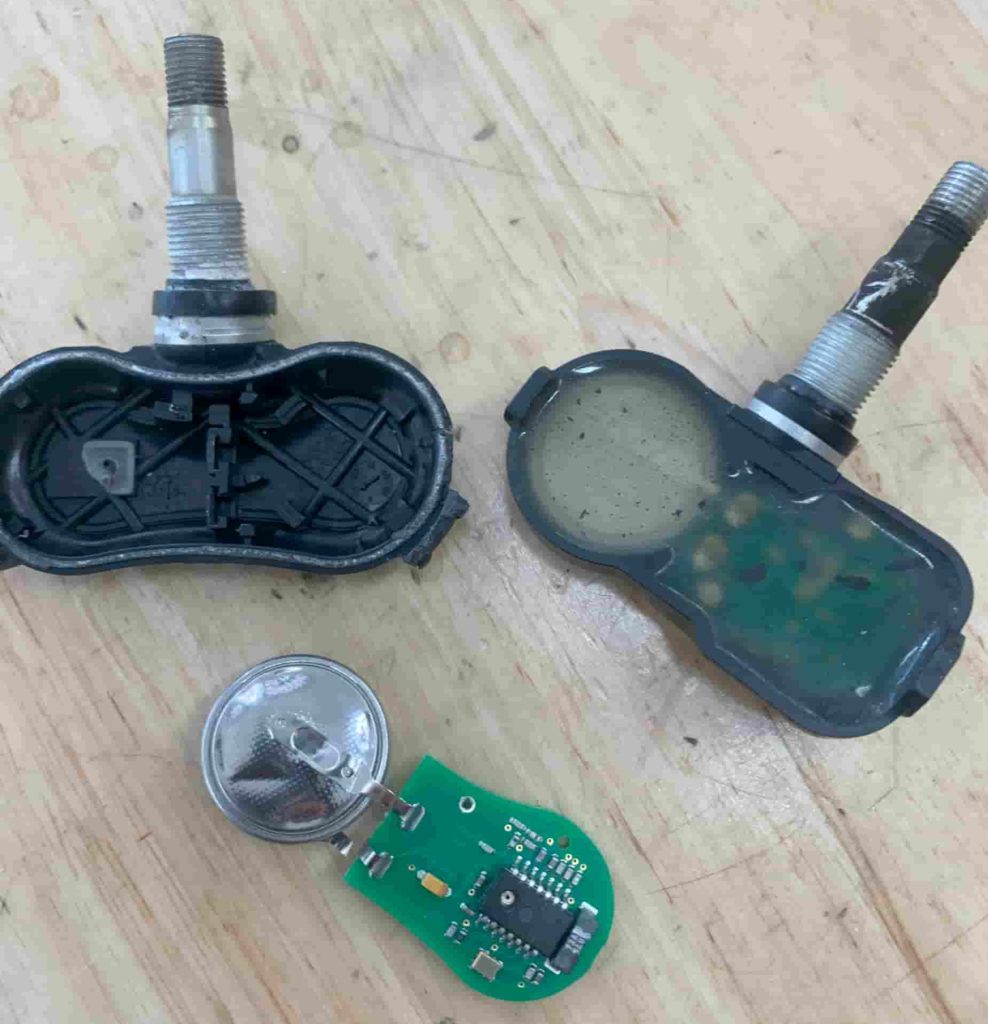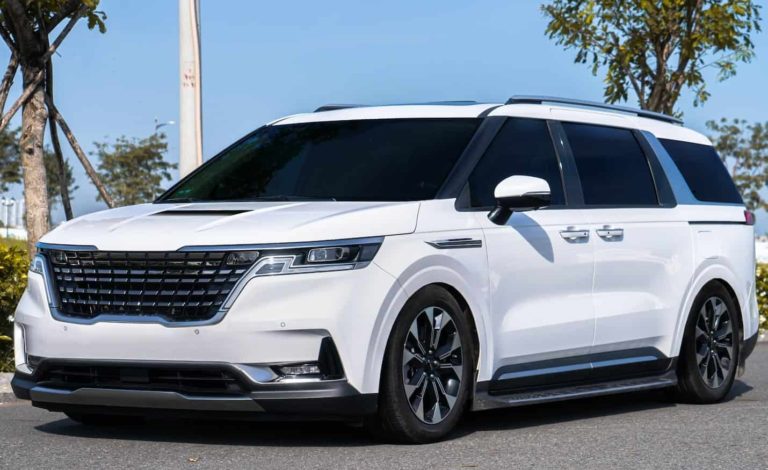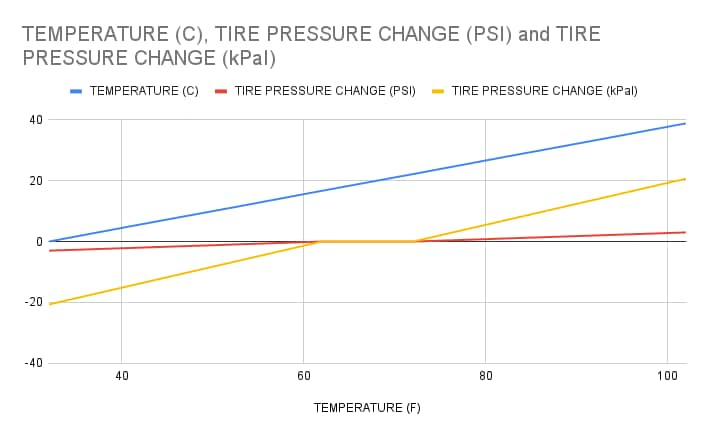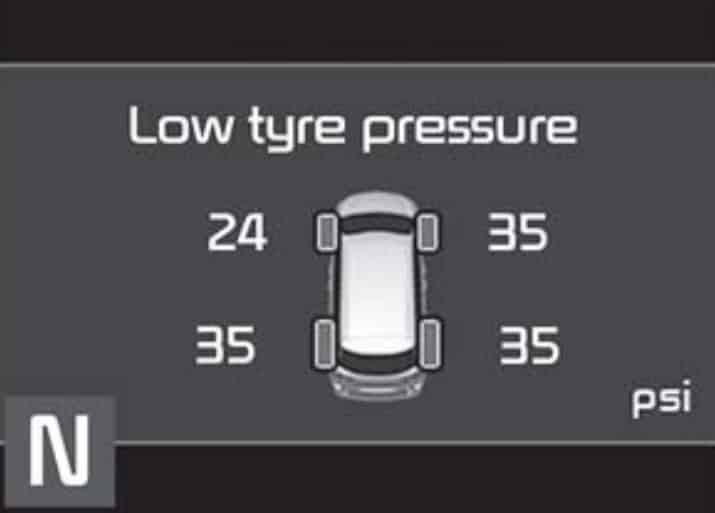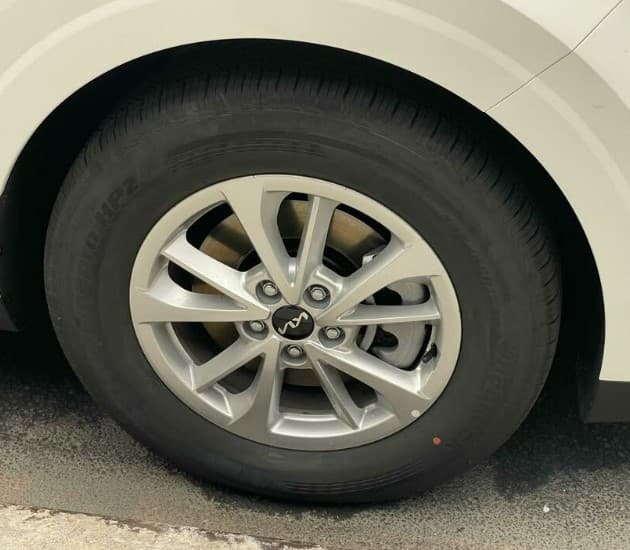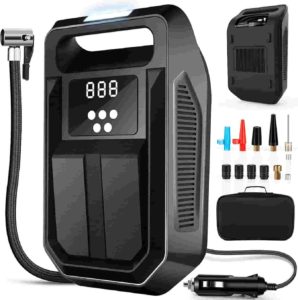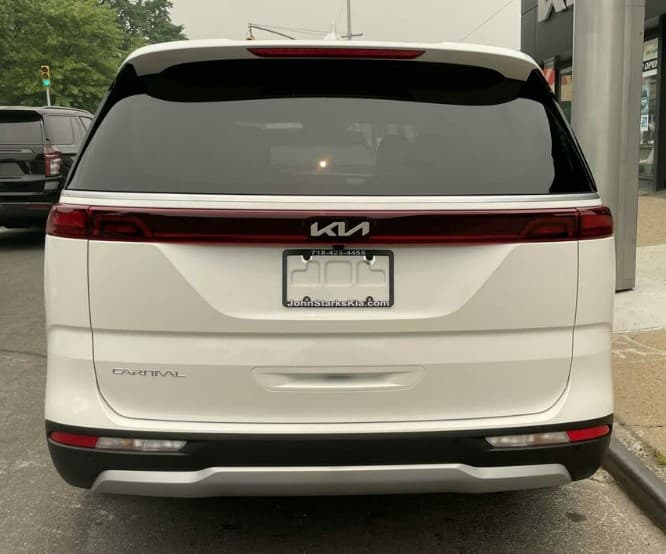Introduction
Before getting into the details, it’s crucial to understand that the Kia Carnival MPV does not have a tire pressure reset button. Consequently, any information from videos or websites indicating otherwise should be ignored – simply because it doesn’t exist. Don’t worry! Follow the steps in this article and you’ll successfully turn off your tire pressure light with no problems at all.
What is the Kia Carnival MPV TPMS?
Seeing that yellow exclamation point light up on your dashboard might be annoying, but it’s there for an important reason! The tire pressure monitoring system (TPMS) in the Kia Carnival MPV is a safety feature that constantly checks and informs you about the pressure in your vehicle’s tires. Its main purpose is to alert you if your tire pressure is not at the optimal level, helping to ensure a safe and smooth driving experience.
How Does the Kia Carnival TPMS Work?
Sensors: The Kia Carnival MPV’s tire pressure system has sensors mounted on the end of each valve stem to measure air pressure and temperature of each tire.
Wireless data transmission: The sensors wirelessly transmit the tire pressure data to the car’s TPMS control unit and ECU/ECM using radio frequencies.
Continuous monitoring: The TPMS control unit continually analyzes and measures the tire pressure data received from the sensors.
Pressure comparison: The system compares the measured tire pressure against the recommended levels set by Kia for the Carnival MPV.
Warning activation: If the measured tire pressure is below the recommended levels, the TPMS triggers a warning.
Dashboard display: The TPMS warning light appears on the dashboard LCD with a yellow exclamation point.
Tire identification: The Kia Carnival MPV’s tire pressure system indicates which specific tire is experiencing a pressure issue.
Regular monitoring: The TPMS continuously monitors and measures your tire pressure while driving.
Understanding Tire Pressure
Does the Weather Affect Tire Pressure?
The tire pressure in your Kia Carnival MPV isn’t immune to the whims of the weather. In fact, it reacts quite directly to temperature changes. When the temperature drops and it’s chilly outside, you’ll often find your tire pressure decreasing too. On the flip side, as temperatures rise, so does the pressure in your tires. This is all due to the behavior of air – it contracts when cold and expands when heated. This means that the change of seasons, particularly the transition into colder months, might just trigger your tire pressure light. Just remember, a rough rule of thumb is that for every 10-degree shift in temperature, your tire pressure is likely to drop by around 1 Psi. So, it’s always a good idea to keep an eye on your tire pressure as the weather ebbs and flows.
How to Check Tire Pressure
Get a high-quality tire gauge.
Make sure to check the tire pressure when the tires are cold. “Cold” means your vehicle has been idle for at least three hours or driven less than 1 mile.
Take off the valve cap from the tire valve stem.
Push the tire gauge firmly onto the valve to measure the pressure.
Compare the pressure reading with the recommended pressure on the tire information label. 35 Psi.
If the pressure is lower than 35 Psi, add air.
If the pressure is too high, let out some air by pressing the metal stem in the center of the tire valve. You can use any object like a screwdriver to do this. Be gentle.
Recheck the tire pressure with the gauge.
Don’t forget to put the valve caps back on to prevent leaks and keep dirt and moisture out.
To check your tire pressure using the information display: Press the mode button on your steering wheel and scroll over to the information mode to see your current pressures. Or use an accurate tire pressure gauge.
2023 Kia Carnival Tire Pressures
TIRE SIZE | FRONT PSI | REAR PSI |
235/65R17 | 35 | 35 |
235/55R19 | 35 | 35 |
SPARE TIRE | 60 | 60 |
When Should You Adjust Your Tire Pressure?
The optimal time to adjust your Kia Carnival MPV’s tire pressure is in the morning or when your vehicle has been parked for a few hours. This is because your tires should be cold when you’re checking and adjusting the pressure. This is called “cold tire pressure”. When you drive the tires heat up which can cause the air inside to expand and give a higher pressure reading. Do not adjust your tire pressure when your tires are hot, it will not be accurate and can lead to overinflation.
What Happens When tires are Underinflated?
When the tires of your Kia Carnival MPV are underinflated, it can have several impacts on your vehicle’s performance and safety.
Handling and Control: Underinflated tires can reduce the car’s handling ability, making it more difficult to steer and maneuver. The tires may not respond as quickly or accurately as they would if properly inflated, which could increase the risk of accidents, especially in challenging driving conditions.
Fuel Efficiency: Underinflated tires can also negatively affect your car’s fuel efficiency. They cause an increase in rolling resistance, which means your vehicle has to work harder and burn more fuel to move forward.
Tire Life: Tires that are not adequately inflated can wear out more quickly. They tend to wear unevenly, with more wear on the outer edges and less in the middle, which can significantly reduce their lifespan.
Safety: Underinflated tires are more prone to overheating because they create more friction with the road. This excess heat can lead to tire blowouts, which are dangerous and could lead to severe accidents.
If you notice your TPMS light coming on, or if you suspect your tires might be underinflated, it’s crucial to check your tire pressure as soon as possible and inflate them to the recommended levels. This will ensure your Kia Carnival MPV operates safely and efficiently.
TPMS Light and Safety Considerations
What Causes the Tire Pressure Light to Turn On?
Seasonal temperature changes: A drop in ambient temperature can cause tire pressure to decrease, triggering the warning light.
Spare Tire: Driving with the spare tire on will cause the tire light to come on and stay on.
Tire puncture or leak: A sharp object or road debris like a nail or screw may puncture a tire, causing air loss which will of course activate the warning light.
Faulty tire pressure sensor: Damaged or malfunctioning sensors may provide inaccurate readings, resulting in a false alert. The only way to determine which sensor is faulty is to scan each sensor with a TPMS diagnostic tool.
Valve stem issues: A damaged or leaking valve stem can lead to gradual pressure loss and eventual activation of the tire pressure light. They make kits to replace the rubber gasket that usually goes bad.
Tire damage: Impact from potholes or hitting a curb can cause structural damage like tire bubbles, leading to pressure loss.
Sensor battery life: TPMS sensors are battery-powered, and over time, batteries die. (they usually last anywhere from 5-10 years) This will cause the tire pressure light to turn on.
Recent tire rotation or replacement: If the tires have been recently rotated or replaced, the TPMS may need recalibration to avoid false alerts. Sometimes the vehicle’s computer may think the front tires are in the rear and rear in the front after a rotation.
Wheel or rim issues: Damaged, corroded, or cracked wheels or rims can lead to air leaks and pressure loss. This is very common with low profile tires.
Altitude changes: Climbing or descending in elevation can affect tire pressure and trigger the TPMS warning.
Natural pressure loss: Tires lose air pressure over time due to temperature changes and permeation. Tire dry-rot will happen to tires that sit.
Electrical problems or software issues within the car’s TPMS system. Occasionally the system may have a software update.
Is it Safe to Drive With the tire Light On?
Don’t drive your Kia if the tire pressure warning light is on. It could be dangerous. It’s important to figure out why the light is on. Is there something like a nail stuck in your tire? Is there a leak somewhere? Is your tire losing air fast or slowly? Knowing exactly what’s wrong will help you decide if it’s safe to drive and for how long.
Why is My Tire Light On But My Tires Are Fine?
Even if your Kia Carnival tires physically look okay, they might not have the right pressure. Check the pressure in all your tires including the spare one and make sure it’s correct. If that’s fine, think about if the weather has changed a lot recently. Does the tire light turn off when you add air, but turn back on when you start driving? If so, there’s probably a leak in the tire. If all your tires have the right pressure, they’re not losing air, but the tire light is still on, it’s probably because the tire pressure sensor isn’t working properly. This is usually due to the battery in the sensor running out, causing a TPMS malfunction.
What is the TPMS Malfunction Indicator?
Your Kia Carnival MPV also has a special warning light to alert you to potential issues with your tire pressure monitoring system (TPMS). This warning light displays a yellow exclamation point, identical to the tire warning light. If there is a problem with the TPMS, the light will flash for approximately one minute before staying on. This sequence will occur every time you start your car until the issue is resolved. So, when your tire light is flashing or blinking, the system may not be able to accurately detect low tire pressure. In conclusion, a blinking tire pressure light typically signals a malfunction within the TPMS itself, rather than an actual tire pressure concern. Often, this is due to a defective pressure sensor in one of your tires. To determine which sensor is faulty, use a TPMS diagnostic tool.
Tire Presure Sensors
Each tire pressure sensor uses a battery for power. It’s important to know that these batteries aren’t meant to be replaced. They’re similar to watch batteries and are attached to the sensor’s circuit board. When the battery dies the whole sensor needs to be replaced because it’s part of the circuit board. The battery’s life can vary based on things like driving conditions and the weather. Usually, these sensor batteries last about 5 to 10 years.
Managing and Troubleshooting the TPMS
Kia Carnival MPV Tire Pressure Light Reset Procedure
The Kia Carnival MPV does not have a tire pressure reset button.
When the tire pressure light on the dashboard lights up, pull over and check your tire pressure right away.
Determine which tire is causing the tire pressure light to turn on and adjust the tire pressure accordingly.
Fill your tire to the exact recommended pressures. I cannot emphasize this enough, accuracy is key. 35 Psi in the front and rear tires.
Drive your Kia Carnival MPV. Drive for a few minutes at speeds over 20 Mph.
What Tools Do You Need to Reset the Kia Carnival TPMS?
You just need a good air pressure gauge to reset the Kia Carnival tire pressure system. The car’s computer has a built-in reset process.
TPMS Troubleshooting Tricks
Option 1:
If the light doesn’t go off right away, re-check your tire pressure to make sure they are all at the exact pressure you set them to. If they are down in pressure, you probably have some sort of tire leak. Read the section on “identifying a tire leak” to learn how to find where your tire is leaking from.
Option 2:
Double check your spare tire. Some spare tires have their own tire pressure sensor. This means that if the spare tire is low on air, the tire light will illuminate.
Option 3:
If the pressures are at the exact pressure you set them to and the tire light still won’t go off, over fill your tires to waken the sleeping sensor. We recommend filling your problem tire with 45 Psi or about 10 Psi over the recommended pressure. With the tire overfilled, drive the car again for 10 or 15 minutes. This will turn off the tire light. Now that the tire light is off, readjust the pressure back to 35 Psi.
Option 4:
Reset the Kia Carnival computer system. If your tires are not leaking and the spare tire is at the correct pressures you can try manually erasing the error codes within the vehicle’s ECU. Disconnect the negative terminal from the main 12 volt battery. Wait a few moments and then reattach the terminal. This will erase all error codes from the ECU including the tire pressure error code causing the tire light.
How To Install and Calibrate New Tire Pressure Sensors
First, you have to take the wheel off the Kia Carnival and then take the tire off the wheel to get to the sensor. Loosen the small screw on the base of the sensor to remove the old sensor, and pull the valve stem out from the top of the wheel. Once the old sensor is out, you can put the new one in. (Before you install it, take a picture of the ID code on each new sensor. You might need these numbers later, and you won’t be able to see them once the tire is back on the wheel.) Make sure the new sensor uses the same frequency as the OEM Kia Carnival sensors. (either 315 Mhz or 433 Mhz). To put in the new sensor use a valve tool to pull the valve through the hole in the wheel. After the new sensor is in and the tire is back on the wheel, you have to get the new sensor to talk to the Kia Carnival computer. This is called TPMS relearning. You tell the computer the new sensor’s unique ID code so it can get signals from the new sensor. You need a TPMS relearning tool for this. Scan each of the tire pressure sensors (new and original), and sync the tool with the car’s computer. You do this by connecting the TPMS tool to the Kia’s OBD2 port, which is under the steering wheel.
Tire Leaks and Solutions
Finding the Source of a tire Leak
To find a tire leak in your Kia start by checking the air pressure in each tire to see which one is low. Put air in the tire that’s low because you can’t find a leak if the tire has no air in it. Next, mix some soap and water in a spray bottle (or use Windex) and spray it all over the tire. Pay extra attention to the part of the tire that touches the rim or the wheel and the valve stem. Make sure the tire is very wet. Wait a little while and then look carefully at the tire for any small bubbles. If there’s a leak, the air coming out will make tiny bubbles where you sprayed the soapy water. You have to be patient to see these bubbles. If the tire is losing air, there is a leak somewhere so keep looking until you find it!
Are Tire Plugs Safe?
Yes! I’ve used tire plugs to fix a lot of tires, and I can tell you they work great. They’re a good fix for punctures in the tread of the tire. You put them right into the hole made by things like nails or screws, which stops air from leaking out. Tire plugs are made from tough rubbery materials that can handle the tough conditions inside a tire such as big changes in air pressure and temperature. If you put a tire plug in right, it will last as long as the tire does. But remember, you can’t use tire plugs to fix the sidewall of a tire.
Are Tire Sealants safe?
Tire sealants may provide an immediate solution for a flat tire on your Kia Carnival during emergent circumstances, yet they are not designed for prolonged use. These compounds have the capacity to cause substantial harm to your tire pressure sensors due to the potential destruction of the sensor’s electronic circuit board, leading to TPMS malfunction. Tire sealants may have detrimental effects on the tire itself by disrupting its balance, subsequently causing intense vibrations in the steering wheel during driving. This is largely a result of introducing a liquid substance into the tire. Given these factors we recommend refraining from using tire sealants unless absolutely necessary. If a situation arises where the use of a tire sealant becomes imperative, ensure that you bring your Kia Carnival to a tire repair facility at the earliest opportunity.
TPMS Legal Considerations
Are TPMS Sensors a Legal Requirement?
In many places around the world, like the United States and Europe, cars are legally required to have tire pressure monitoring system sensors. The U.S. passed a law in 2000 called the TREAD Act that says all cars made after September 2007 have to have these sensors. This law is mainly for car manufacturers, not drivers and is meant to make roads safer by letting drivers know when their tire pressure changes a lot. Starting in November 2012, Europe made a similar rule that all new passenger cars need to have these sensors. These rules are in place to help prevent accidents caused by tire problems.
Will My Kia Pass State Inspection With the Tire Light On?
Yes it will pass. In some states, state inspectors check the tire pressure monitoring system when they do a car safety check, but what they look for can be different in each state. For instance, in New York and Texas they look at the tire pressure light during the check, but if it’s on it doesn’t mean the car fails the check. I’m a licensed inspector in New Jersey, and in this state it’s not necessary for passenger cars to have a working TPMS. The car will pass the inspection even if the tire pressure light is on. It’s different for commercial vehicles, though, because they need to pass “safety inspections” in New Jersey. Since rules can vary by state, you should check with your local DMV or MVC or other state agencies to get the most accurate and current information.
Conclusion
The tire pressure monitoring system (TPMS) in your Kia Carnival MPV is an invaluable and underrated asset that ensures your vehicle’s safety, performance, and efficiency. It not only aids in maintaining optimal tire pressure but also saves you from unexpected tire-related inconveniences. Although the Kia Carnival lacks a tire pressure reset button, the process of managing tire pressure is still straightforward. With this guide you are well-equipped to handle any tire pressure issues and make the most of your Kia Carnival MPV’s innovative TPMS! Everything in this article is applicable to all Kia Carnival MPV models and trims.

